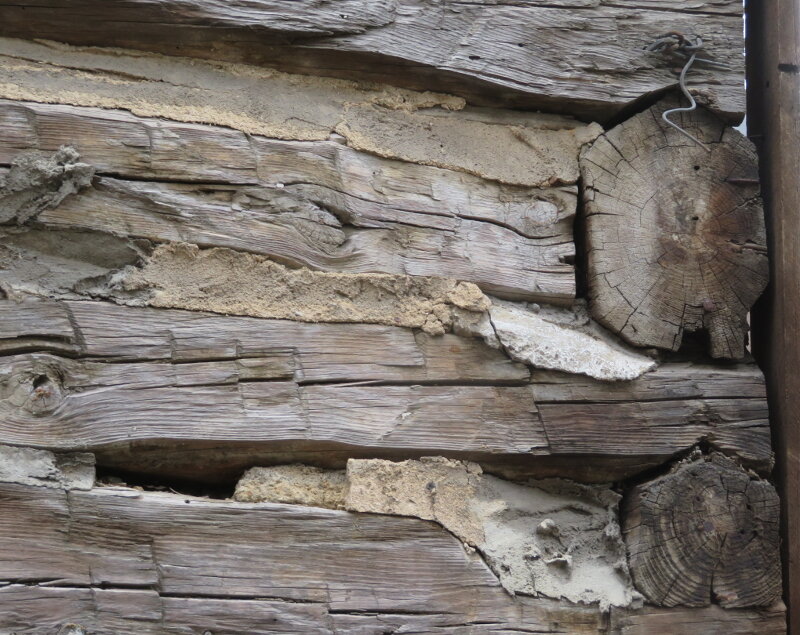The Argument for Home Inspections of New Houses
How long should a house last?Fifty years?Ehh. That seems a bit short for something that comes with a price tag of several hundred thousand dollars.One hundred years, maybe?Not bad. This is longer than the average life expectancy.A couple hundred years?This is the goal, right? Shouldn’t a house last as long as possible?Of course, this question has no definitive answer. It does, however, offer an informative way of thinking about the quality of houses.How a given house holds up over time is a consummate concern of homebuyers and home inspectors alike. I conservatively estimate that I only go about three or four inspections without hearing someone say, “They don’t build ‘em like they used to”.So is it true?Strictly speaking, this is an undeniable truism. Construction methods, especially over the last century or so, have changed dramatically: power tools, automobiles, and the ability to pour large-scale concrete foundations come to mind. But the statement is really about craftsmanship and permanency. Were older house built to a higher standard?Here, I think it is fair to think about how the practice of home building has changed over time, specifically materials and labor.What goes into a House?It is hard for people to today, even those in the building industry, to fully realize how much physical labor went into home construction once upon a time. In many of the pre-Civil War homes scattered throughout the Shenandoah Valley, the logs were hewn by hand on site. Though its availability has slowly increased since the industrial revolution, metal hardware was not as abundantly available as it is today. Carpenters frequently used wood fittings and treenails (cut wooden pegs) where metal fasteners are used now. Through World War I, every hole, notch, and board had to be cut by hand with tools that needed almost daily sharpening. Modern power tools and mass-produced hardware have drastically cut down on the physical labor needed to build a house.Early home builders in the Mid-Atlantic were also somewhat restricted by the resources they had at hand. The rocks in the fields were used to make foundations, bricks were made locally, and the lumber used to frame a house, if not from the same area, traveled no more than the distance of a state or two. Today, the materials that go into a house come from around the world. Framing lumber often comes from the American Northwest, Canada, or even Scandinavia. The Southern Yellow Pine used for trusses comes from the Deep South. Much of the hardware used is produced in Asia. Many lighting fixtures and products are made in Mexico. Unlike days of yore, builders are no longer constrained by the natural materials of a given building site.Many of the changes to the older methods described above can be traced back to the post-World War II building boom. Demand for housing was astronomical and the war had catapulted global commerce to a level never before seen. Given the limited availability of materials and the intensity of labor it took to build houses before this point, I would argue that homes built before the 1950s were crafted with more attention to durability than they are today. They had to be.If a tree falls and swipes a swath of vinyl siding from your house today, it takes a phone call and probably no more than an afternoon to fix the damage. When materials weren’t as easy to come by and lots of skilled labor was needed, houses were built with less wieldy but stouter materials: structural brick, stone, or logs. For instance, if your wunderkind breaks a window today, you’re probably going to have to have the whole sash or maybe even the entire window replaced. Conversely, if a budding Babe Ruth fan in the 1920s sent a baseball through the living room window, an individual plate of glass or two might have been replaced, but it would have taken a major calamity to render an entire window worthless.Another example: Interior walls in many houses through the 1950s were plaster and lath. The wood lath (later wire mesh) was attached to the studs and then itself covered with usually three layers of plaster, a laborious process. Consequently, wall coverings were much thicker and stronger but took a great deal longer to fashion.As the need for physical labor decreased and resources became more readily available, the emphasis in home building could shift to speed of production. For most profitable businesses, speed is of greater value than attention to detail. Now, this is not a roundabout way of saying houses today are, as a rule, inferior. What I am saying is that cheap, abundant resources and less dependence on physical labor has diminished the consequences of repairs and errors.ResponsibilityIn asking how long a house should last, it is also important to think about what a given builder’s responsibility for the soundness of a house is. Most new houses today have at least a one year contingency for errors and repairs. The legal ticky-tacky of what and how much is covered is too boring for me to get into, but suffice it to say that most builders have a measurable level of responsibility for at least a year.A year is not a long time.If the floors squeak, windows stick, and tub doesn’t drain on day 366 after closing on a new house, the vast majority of buyers are on their own. If poor lot grading causes the basement to flood with frightening frequency, you better have some space on the credit card. If the deck pulls away from the house because its columns have sunken, you’re either going to need to hire a decking contractor or tie a tether to any guest who uses it. It’s true that some builders do offer extended warranties on things like foundations, but even ten years is just the blink of an eye from the perspective of the thousands of homes in our area that are many decades old –and, of course, those warranties aren’t free.Again, I’m not arguing that new homes are inferior. A home built before indoor plumbing was available will always have certain unique challenges. Likewise, the heating / cooling and electrical systems of modern houses are way more advanced than they once were. What I am encouraging potential buyers to be aware of is that the window of responsibility on the part of builders is relatively short, and building fast is more profitable than building to the highest possible standard. Consider: most cars these days last at least a decade if not more, and cars are far less of an investment than houses. Houses should last significantly longer than cars, right?Home building is a business. Realize that while your home is a source of pathos for you, it is just a product for the company that built it. What you see as a gathering place for friends and family and the walls that keep you warm on windy winter nights is just a dollar figure from another perspective. And from the latter perspective, taking well over a year to build, custom carpentry, and making sure that every doorway is square just aren’t as profitable as building the same house over and over with a limited number of variations.The TakeawayA house built one hundred years ago was likely assembled by a company and crew that lived in the area. The builder’s reputation was built the old fashion way through word of mouth and referral: woeful work resulted in a ruinous reputation while careful craftsmanship resulted in the appropriate accolades. Today, national builders employ a bevy of well-paid lawyers and marketing specialists to ensure their official reputation is as well-groomed as a purebred at the Westminster Dog Show. Now, I’ll be the first to tell you that I have met some exceptional supervisors and other various representatives of national builders who are fantastic people with all the empathy and work ethic you could ask for, but I know this because, as a home inspector, I have the perspective of time. I get to see their work a lot. Most home buyers do not have the luxury of this perspective. It can be tough to tell a plastic smile from a genuine one in the moment.The overarching purpose of my blog, and my work inspecting on-site, is to put people in a position to make good decisions regarding their home or a perspective new home.My advice for folks thinking about new construction is this: Hire a qualified real estate agent with whom you can be open an honest. Agents advocate on your behalf and know the language and procedures of home buying. They are more familiar with the ins and outs of what builders are required or not required to do than you are. Obviously, I also encourage potential buyers to hire a home inspector. Most home inspectors offer both pre and post drywall inspections so they can look for potential missteps at a couple points along the way. Buyers sometime forgo the services of a home inspector because they know that a county inspector will be coming through. To this all I can say is that despite the talents of the local code inspectors, I find errors and oversights every time I inspect a new house. Furthermore, what’s more advantageous, the perspective of one or two? It is also important to remember that building codes are the lowest level of acceptability under the law. They are the floor not the ceiling. Passing a code inspection means the builder didn’t get an F; it does not mean they got an A.Remember: the pigs who built their houses out of straw and sticks spent less time building and got to move in before the pig who built his house out of bricks, but we all know how things turned out in the end. The story is for kids but this doesn’t mean we should ignore it as adults.No house is perfect, new or old, but hiring a knowledgeable real estate agent and skillful home inspector is the best way to put yourself in a position to make good decisions and have your voice heard.
Joe





